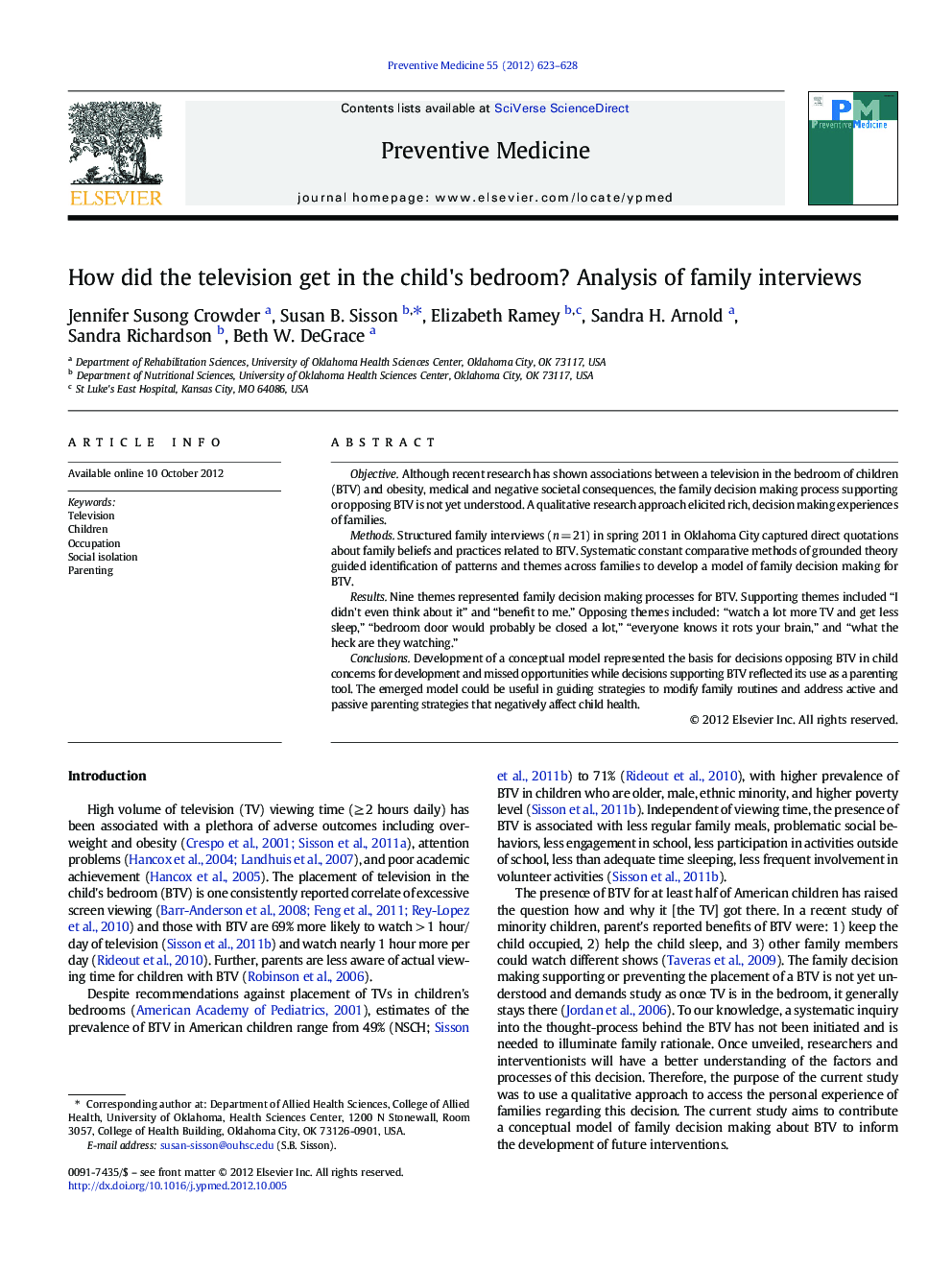| Article ID | Journal | Published Year | Pages | File Type |
|---|---|---|---|---|
| 3100681 | Preventive Medicine | 2012 | 6 Pages |
ObjectiveAlthough recent research has shown associations between a television in the bedroom of children (BTV) and obesity, medical and negative societal consequences, the family decision making process supporting or opposing BTV is not yet understood. A qualitative research approach elicited rich, decision making experiences of families.MethodsStructured family interviews (n = 21) in spring 2011 in Oklahoma City captured direct quotations about family beliefs and practices related to BTV. Systematic constant comparative methods of grounded theory guided identification of patterns and themes across families to develop a model of family decision making for BTV.ResultsNine themes represented family decision making processes for BTV. Supporting themes included “I didn't even think about it” and “benefit to me.” Opposing themes included: “watch a lot more TV and get less sleep,” “bedroom door would probably be closed a lot,” “everyone knows it rots your brain,” and “what the heck are they watching.”ConclusionsDevelopment of a conceptual model represented the basis for decisions opposing BTV in child concerns for development and missed opportunities while decisions supporting BTV reflected its use as a parenting tool. The emerged model could be useful in guiding strategies to modify family routines and address active and passive parenting strategies that negatively affect child health.
► Family decisions regarding bedroom TV's are useful for designing interventions. ► Two themes supporting a bedroom TV emerged: active and passive decision making. ► Seven themes emerged to prevent bedroom TV; all were active decision making.
